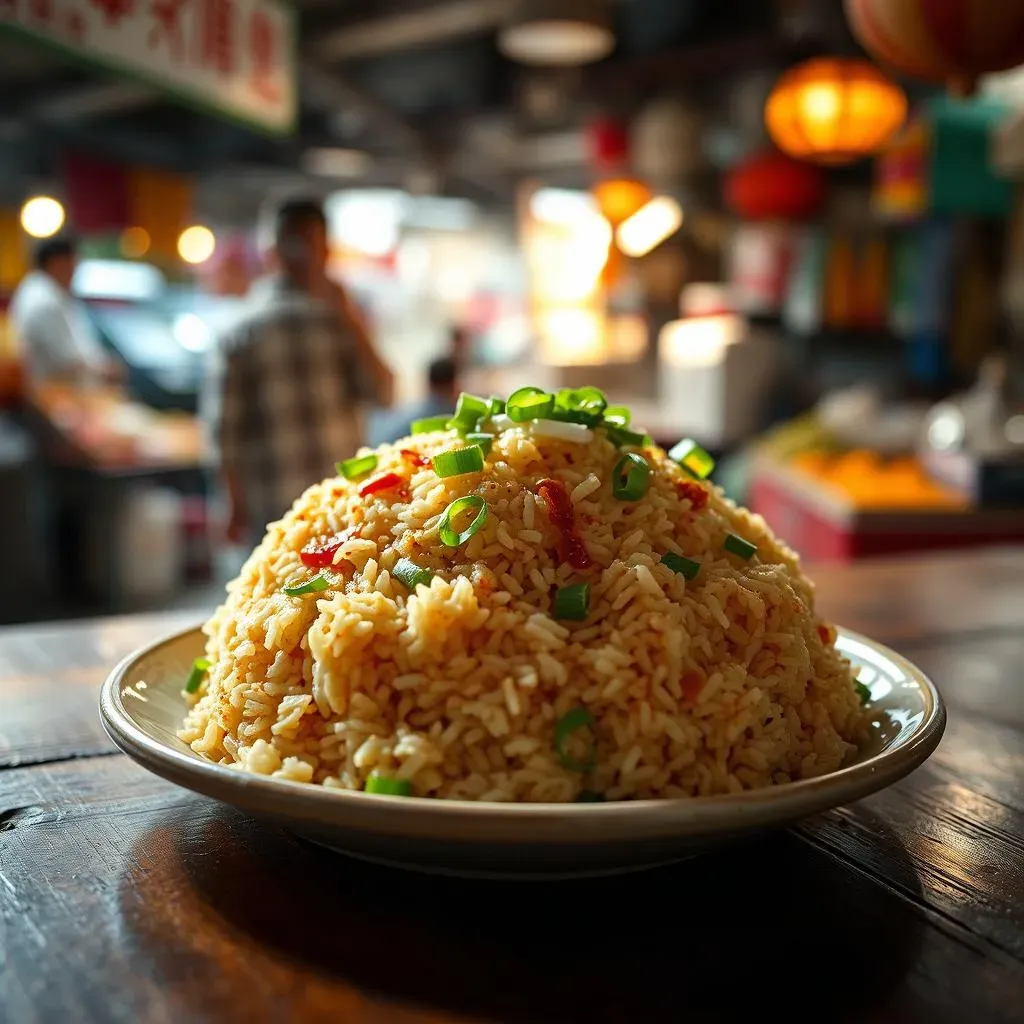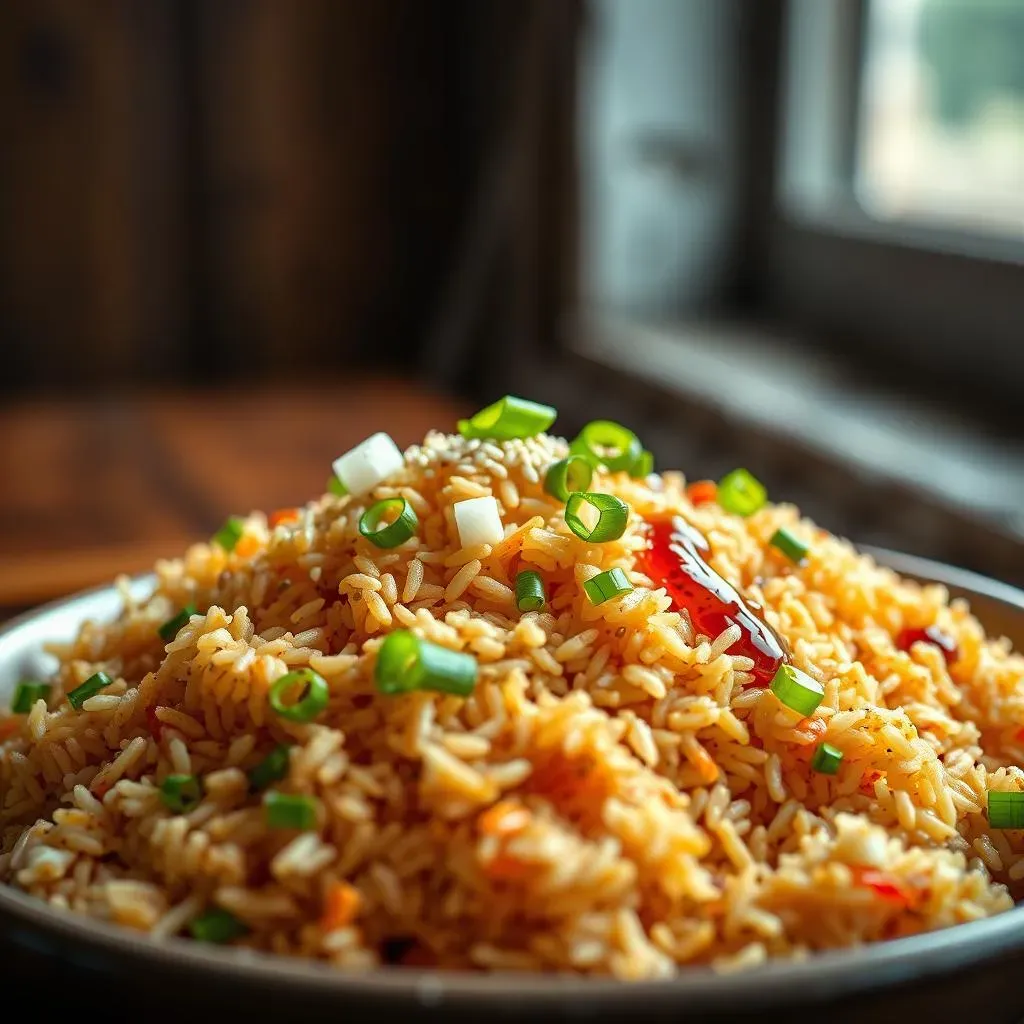Table of Contents
Ever wondered, "What is fried rice?" It's more than just a simple dish; it's a culinary journey spanning centuries and continents. This article serves as your guide to understanding this beloved meal, from its humble origins to its countless modern variations. We'll explore the fascinating history of fried rice, tracing its evolution from a practical way to use leftover rice in ancient China to its current status as a global favorite. You'll discover the secrets behind its unique texture and flavor, learning why some types of rice work better than others. We'll also explore the diverse range of ingredients that can be incorporated into fried rice, from vegetables and meats to seafood and spices, showing you just how versatile this dish truly is. Finally, we'll provide you with practical tips and tricks to create your own perfect fried rice at home, empowering you to experiment with different flavors and ingredients. Get ready to embark on a delicious adventure as we uncover everything you need to know about this iconic dish – starting with the simple question: what is fried rice?
What is Fried Rice? A Simple Explanation

What is Fried Rice? A Simple Explanation
Fried rice is, at its core, a stir-fried dish made with cooked rice. It's incredibly versatile; think of it as a blank canvas waiting for your culinary creativity! The rice is typically combined with other ingredients, such as vegetables (peas, carrots, onions are common), protein (chicken, pork, shrimp, tofu are all popular choices), and aromatics (garlic, ginger). Soy sauce is almost always part of the mix, lending its signature savory flavor. The entire ensemble is then expertly stir-fried in a wok or large pan until everything is heated through and the rice has a slightly crispy texture. It’s a quick, easy, and incredibly delicious meal that's perfect for using up leftovers.
Key Ingredient | Role in the Dish |
|---|---|
Cooked Rice | The base of the dish, provides texture and absorbs flavors. |
Vegetables | Add color, texture, and nutritional value. |
Protein | Adds substance and flavor. |
Soy Sauce | Provides saltiness and umami. |
But what makes fried rice *fried* rice? It’s not just about the amount of oil used (although a good amount helps with that lovely crispiness). It’s the cooking method itself: the quick, high-heat stir-frying that creates those perfectly separated grains and slightly caramelized edges. Think of it like this: stir-frying is the *technique*, and the combination of ingredients is the *flavor profile*. You can have fried rice that is vegetarian, vegan, or packed with meat – the possibilities are endless!
- Uses leftover rice – reduces food waste!
- Incredibly customizable – add your favorite veggies and proteins.
- Quick and easy to make – perfect for a weeknight meal.
The History of Fried Rice: From Humble Beginnings to Global Phenomenon

The History of Fried Rice: From Humble Beginnings to Global Phenomenon
Ancient Origins in China
Believe it or not, the story of fried rice stretches back centuries! While pinning down the exact origin is tricky – historical records aren't always crystal clear – many food historians point to China's Sui Dynasty (581-618 AD) as a likely birthplace. Imagine this: a busy kitchen, maybe in a royal palace or a bustling inn. Leftover rice was a common occurrence, and resourceful cooks found clever ways to transform this seemingly simple ingredient into something new and exciting. Stir-frying the rice with readily available vegetables and meats was a practical solution, and a delicious one at that! This wasn't some grand culinary invention, but a practical solution that accidentally became a culinary masterpiece. It was a testament to the ingenuity of cooks who knew how to make the most of what they had.
Era | Likely Development |
|---|---|
Sui Dynasty (581-618 AD) | Leftover rice repurposed into a stir-fried dish. |
Later Dynasties | Regional variations and ingredient experimentation emerge. |
20th Century Onwards | Global spread and countless adaptations. |
A Global Culinary Fusion
From its humble beginnings in China, fried rice embarked on an incredible journey. As trade routes expanded and cultural exchange flourished, this adaptable dish traveled far and wide. Different cultures embraced fried rice, adding their own unique ingredients and flavors. You find variations across East and Southeast Asia, with each region boasting its own signature style. Think of Indonesian Nasi Goreng, with its characteristic shrimp paste and kecap manis (sweet soy sauce), or the vibrant vegetable fried rices found throughout China. The beauty of fried rice lies in its ability to adapt; it's a testament to culinary creativity and the power of shared food traditions. It’s a dish that truly belongs to the world.
- China: The birthplace, with countless regional variations.
- Southeast Asia: Nasi Goreng (Indonesia), Khao Pad (Thailand), and many more.
- Globally: Found in restaurants and homes worldwide, with endless variations.
Making Your Own Fried Rice: Tips, Tricks, and Variations

Making Your Own Fried Rice: Tips, Tricks, and Variations
Choosing Your Rice: The Foundation of Flavor
The type of rice you use significantly impacts the final texture of your fried rice. Long-grain rice, like jasmine or basmati, is generally preferred because it cooks up fluffy and doesn't get overly sticky. This is crucial for achieving those perfectly separated grains that are characteristic of good fried rice. Avoid short-grain rice like sushi rice; its high starch content will result in a gummy, clumpy mess. Ideally, use day-old rice – it's drier and less sticky, making it easier to stir-fry without clumping. If you're using freshly cooked rice, spread it out on a baking sheet to cool and dry before using it.
Rice Type | Suitable for Fried Rice? | Why? |
|---|---|---|
Long-grain (Jasmine, Basmati) | Yes | Fluffy, non-sticky texture. |
Medium-grain | Acceptable (but less ideal) | Can be slightly sticky, requires careful cooking. |
Short-grain (Sushi rice) | No | Too sticky, results in a clumpy texture. |
Mastering the Stir-Fry: Technique is Key
The magic of fried rice lies in the stir-frying technique. High heat is essential; it's what creates that delicious crispiness around the rice grains and cooks the ingredients evenly without overcooking them. Use a wok if you have one – its curved sides allow for better tossing and even cooking. A large skillet will also work. Start by cooking your protein and vegetables until they're tender-crisp, then add the rice. Constantly toss and stir the ingredients to prevent sticking and ensure even cooking. Don't be afraid to add a little extra oil if needed; it helps to prevent sticking and adds to the overall flavor and texture. Remember, the goal is to create a dynamic and delicious symphony of flavors and textures!
- Use high heat.
- Stir-fry constantly to prevent sticking.
- Add a little extra oil if needed.
- Don't overcrowd the pan.
Flavor Exploration: Beyond the Basics
While soy sauce is a staple, don't be afraid to experiment with other flavorings! Fish sauce adds a savory depth, oyster sauce lends a rich umami, and a dash of sesame oil provides a nutty aroma. Consider adding a touch of sweetness with a splash of rice wine or a pinch of sugar. Fresh herbs like cilantro or green onions can add a bright, fresh element at the end. The beauty of fried rice is its adaptability, allowing for endless customization. Think about your favorite flavors and don't hesitate to incorporate them into your own unique fried rice creation. The possibilities are as vast as your imagination!